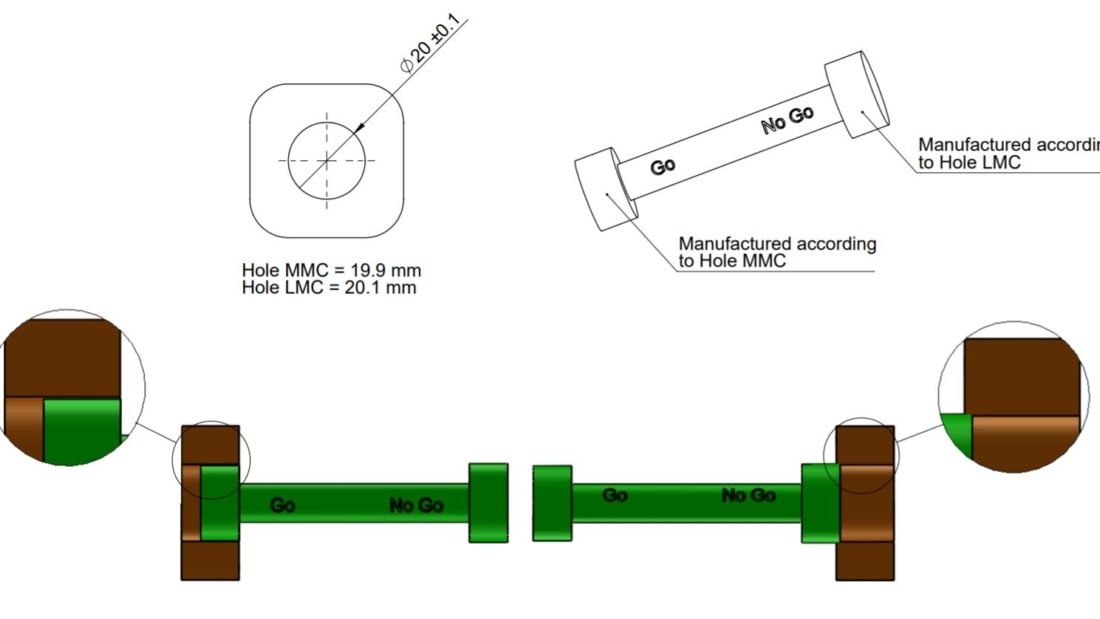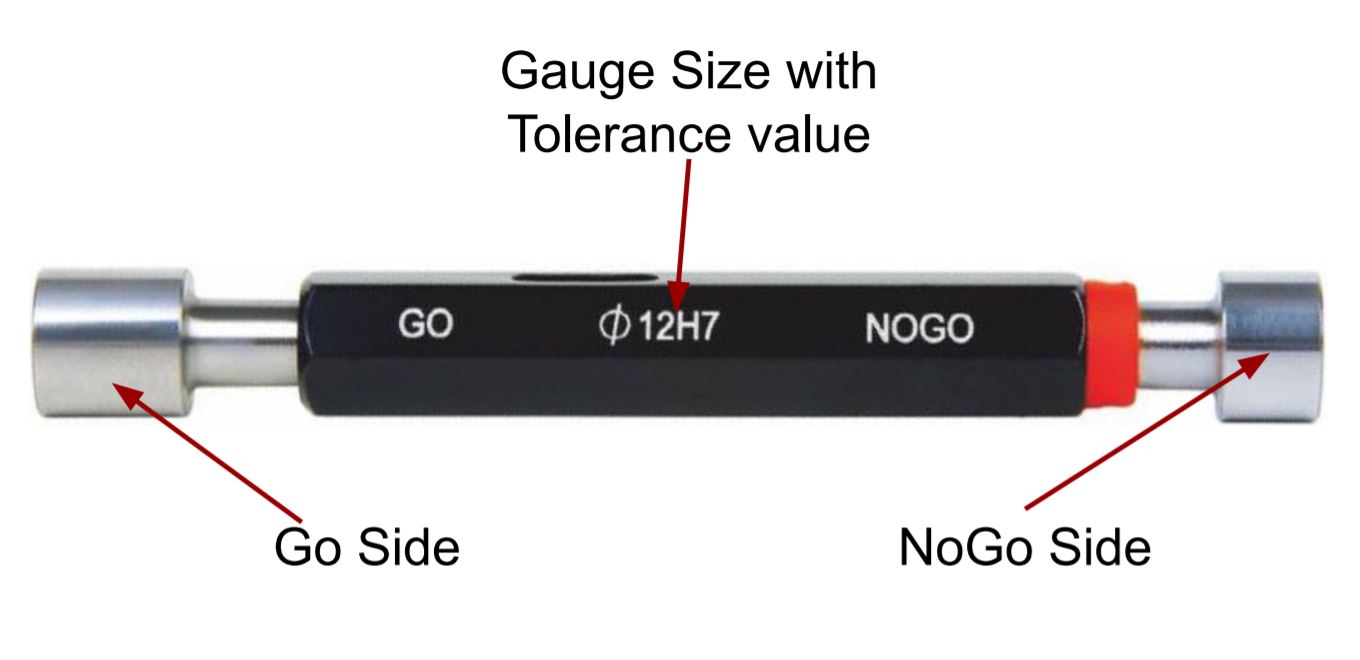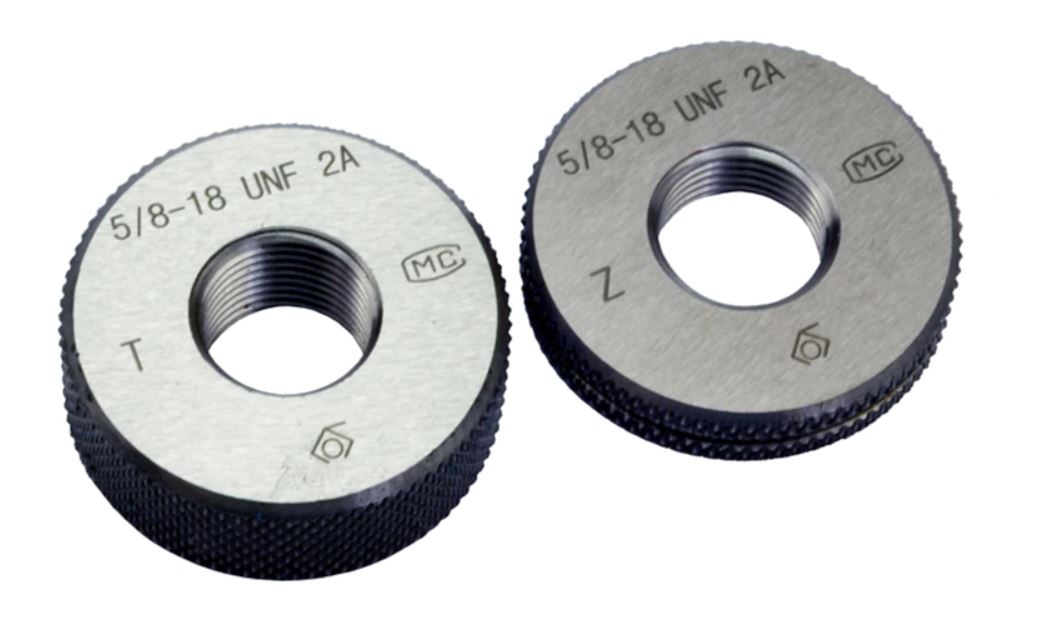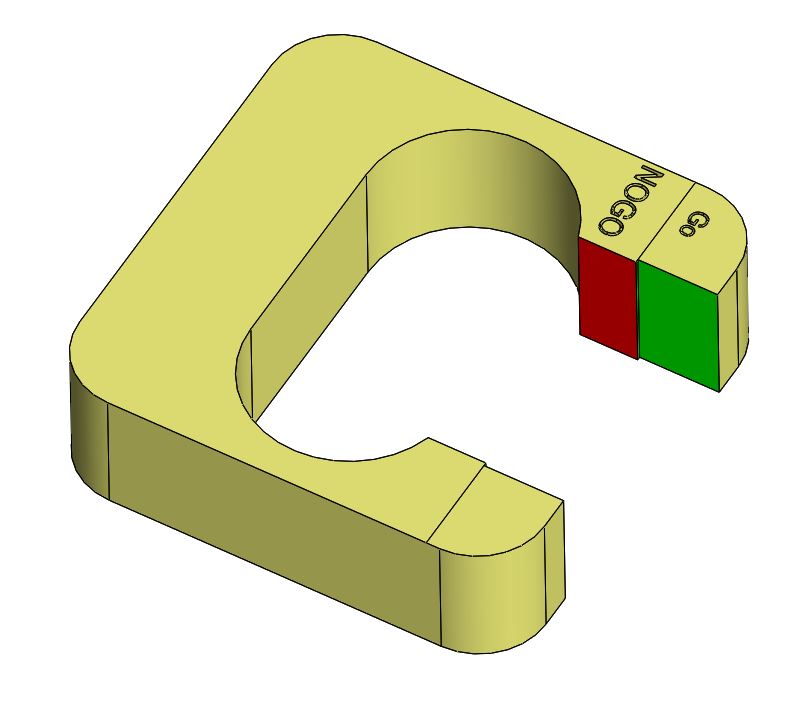What are Go No Go Gauge?
Go No-Go gauges are inspection tools used to determine if manufactured parts are within specified tolerance limits.
As the name suggests, A GO gauge intends “to go” inside the part feature, whereas “No Go gauges” “Not to Go” inside the part feature under consideration. These gauges are available considering the maximum material and Least material condition of the part feature under consideration.

For example, when you are verifying a 20±0.1 mm hole using go/no go gauges. The “Go Side” pin will be at 19.9 mm (Hole MMC), and the No-Go side pin will be at 20.1 mm (Hole LMC) along with the required tolerance limits.
Following three conditions can arise while working with Go / No Go gauges. Inspected part is ok or rejected depending on these three conditions.
| Conditions | Go Gauge | No Go Gauge | Part Acceptance |
|---|---|---|---|
| Case-1 | Fits | Fits | Part is Rejected |
| Case-2 | Fits | Does Not Fits | Part is Ok |
| Case-3 | Does not Fit | Does not Fit | Part is Rejected |
Types of Go No Go Gauge?
Following three types of Go/No-Go gauges are available to control part quality and ensure the interchangeability of the manufactured parts.
- Plug Gauges
- Ring Gauges
- Snap Gauges
Plug Gauge
Plug or Pin gauges are simple and accurate cylindrical gauges used to check if manufactured holes or thread are within limits. They offer a very economical and convenient way of quality control.

The above image shows a plug gauge to measure 12 mm Hole diameter with H7 tolerance. These gauges are available in the market off the shelf, or you can customize them according to your need.
Ring Gauge
Compared to plug gauges, Ring Gauges are used to check if manufactured pin or round feature and external threads are within limits. Ring gauges for threads are designed according to ISO 1502.

As shown above, 5/8-18 UNF ring thread gauges are marked with “T” and “Z” letters. Letter “T” indicates the ring gauge is a go gauge for thread major diameter. Whereas the letter ”Z” indicates the gauge is NoGo for thread pitch circle diameter.
Snap Gauge

Go and No Go type of snap gauges consist of two jaws. The first jaw allows parts to pass, whereas the second jaw stops the part. In this way, you can verify if the part width is within limits.
Advantages of Go No-Go Gauge
The use of Go and No-Go gauges for part verification has the following advantages.
- Simple and accurate.
- Convenient and economical.
- No need to measure feature size to ensure parts are within limits.
- Easy to operate.
Limitations of Go and No-Go Gauges
Using Go No-Go gauges for quality control has the following limitations.
- Verify parts for fitment only. Their dimensions are not measured.
- Can not monitor gradual deviation in the manufacturing process.
- Recommended to be used only on production parts.
We will keep adding more information on go no go gauge. Add your suggestions, comments, or questions in the comment box. We suggest you also read this article on Lean Manufacturing.

Hi
Really admirable. you explain gauges very correctly through its advantages and limitations. It is really helpful and informative for me. Thank you for sharing. Keep sharing
DIC Tools India
https://dictoolsindia.com/gauges/index.php
Are you gauge manufacturer. I want to get design for some gauges for an item.
Hi There,
Thanks for this very clear and informative explanation. I really appreciate sharing this great post. Keep up your work.
Hi There,
Thanks for this very clear and informative explanation.
Keep Updating….
pleas can you differentiate between( go no go thickness gauge)scale measurement and min & max diameter
for example :scale measurement range 20-66
min& max diameter 20.64mm
min dia:20.49
max dia:20.84
How do you separate bulk item that undergoes water leak test that is GO and NO GO?
We marked the item that have been into water leak test.
If I say NO GO put inside red basket, then again when I want to check, I got confused again.
Do you agree if I mark or damage the item to show that is rejected?
Can these gauges made from material other than stainless steel? Like silicone, PVC, plastic etc.